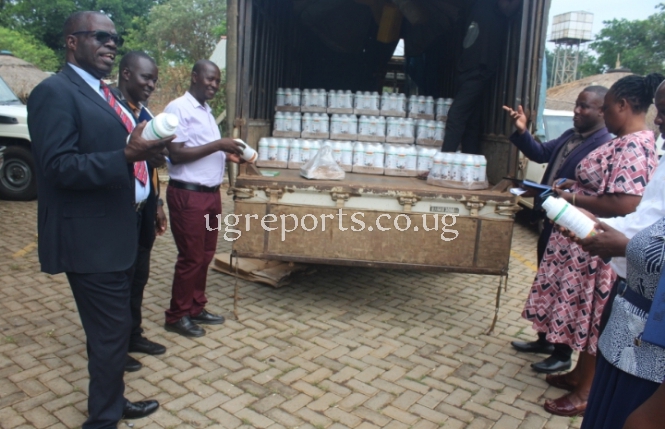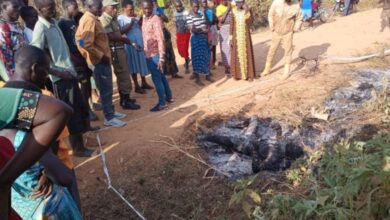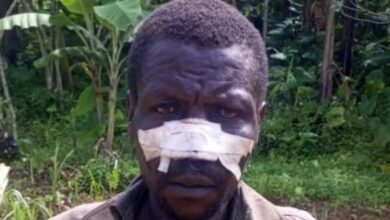Kiryandongo registers suspected sleeping sickness case, boosted with acaricide to combat tsetse flies
He cautioned the technical staff against misuse of the acaricide provided by the government.

By Our Reporter
Kiryandongo: Kiryandongo District has received 200 liters of acaricide from MAAIF to combat the influx of tsetse flies along the Murchison Falls park line and river Nile banks.
The acaricide was delivered following a suspected case of sleeping sickness in the district.
The 200 liters received by Kiryandongo are estimated at a cost of 30 million Uganda shillings and will serve 10,000 heads of cattle, compared to 77,432 heads in the entire district.
According to a vector surveillance report carried out in Kiryandongo and Mutunda subcounties in 2021, the prevalence of trypanosomiasis is 38% and 68%, respectively, which puts the livestock at stake.
This prevalence rate prompted the disease control focal persons for Bunyoro, Lango, Teso, and central Uganda to design a project in line with vector control targeting the elimination of tsetse flies in areas surrounding large water bodies and Murchison Falls national game park.
According to Dr. Bingi Patrick, the Senior Veterinary Officer at Kiryandongo, tsetse control has different approaches, ranging from clearing bushes around homesteads or farms, sterile insect techniques, setting up tsetse traps, and live bait technology.
However, Kiryandongo has opted for spraying animals along the park because tsetse flies prefer feeding on animals, which is a big threat to livestock farmers.
“When these animals are sprayed with delta methrine acaricide, they become moving traps for a month since the acaricide has a residual effect on the body of the animal for a month. Once a tsetse fly bites a sprayed animal, it dies.” Said Dr. Bingi.
Dr. Bingi added that the acaricide provided by the government is not adequate for all the cattle population in the district but encouraged farmers to purchase and spray their animals. “This acaricide provided is for demonstration, so farmers are encouraged to adopt the technology and spray their animals.” Said Dr. Bingi.
Martin Jacan Gwokto, the CAO of Kiryandongo, implored the veterinary officers to ensure efficient use of acaricide. He called upon them to be available at their stations to support the farmers.
Edith Aliguma Adyeri, the district chairperson, commended the government of Uganda through MAAIF for its timely intervention in the fight against the increasing tsetse flies in Kiryandongo. She also urged the agricultural extension workers to continuously sensitize the community on the use of acaricide.
Jonathan Akweteireho, Deputy RDC Kiryandongo cautioned the technical staff against misuse of the acaricide provided by the government.
Akweteireho also urged the extension workers to identify a central public venue and encourage farmers to establish a crush where their animals will be sprayed.
The most recent tsetse survey report of Kiryandongo for 2022 revealed that areas of Mutunda and Kiryandongo sub counties along the park line and the river Nile banks have a high population of tsetse flies trapped per day.
The spraying of the animals will be done every month for four months to align it with the lifecycle of a tsetse fly.
Do you have a story about your community or an opinion to share with us? Email us at theugreports@gmail.com.






